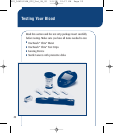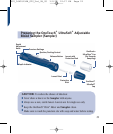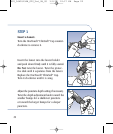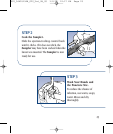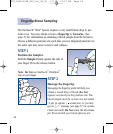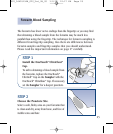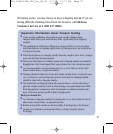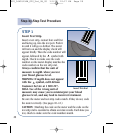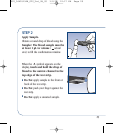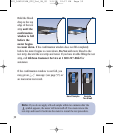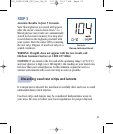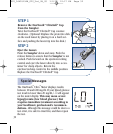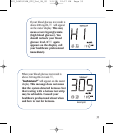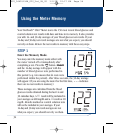
27
If bruising occurs, you may choose to lance a fingertip instead. If you are
having difficulty obtaining blood from the forearm, call LifeScan
Customer Service at 1 800 227-8862.
Important information about forearm testing
◗
Under certain conditions, blood glucose test results obtained using
samples taken from your forearm may differ significantly from fingertip
samples.
◗
The conditions in which these differences are more likely to occur are when
your blood glucose is changing rapidly such as following a meal, an insulin dose,
or physical exercise.
◗
When blood glucose is changing rapidly, fingertip samples show these changes
more quickly than forearm samples.
◗
When your blood glucose is falling, testing with a fingertip sample may identify a
hypoglycemic (low blood sugar) level sooner than a test with a forearm sample.
◗
Use forearm samples only for testing prior to, or more than two hours after
meals, insulin doses, or physical exercise.
◗
Testing performed within two hours after meals, insulin doses, or physical exer-
cise, or whenever you feel that your glucose levels may be changing rapidly,
should be done with a fingertip sample.
◗
You should also use fingertip testing whenever you have a concern about hypo-
glycemia (insulin reactions) such as when driving a car, particularly if you suffer
from hypoglycemic unawareness (lack of symptoms to indicate an insulin reac-
tion), as forearm testing may fail to detect hypoglycemia.
What you should do:
◗
Use forearm or fingertip samples for testing prior to, or more than two hours
after meals, insulin doses, or physical exercise.
◗
Routine testing before meals can be done either at the fingertip or the forearm.
◗
Consult your healthcare professional before you begin using the forearm
for testing.
DCO_06405104B_OTU_Uni_OB_US 3/8/06 12:17 PM Page 27




